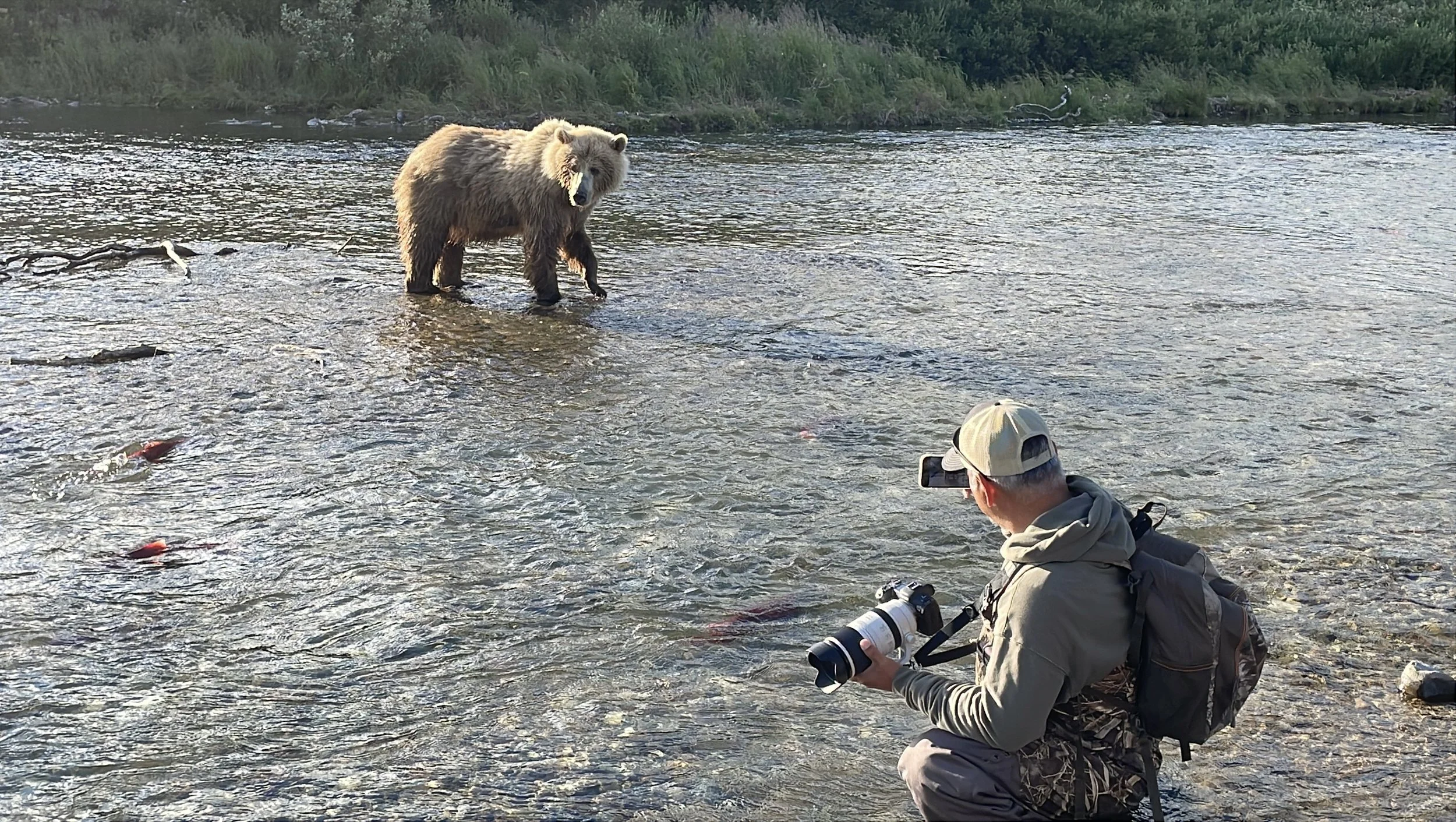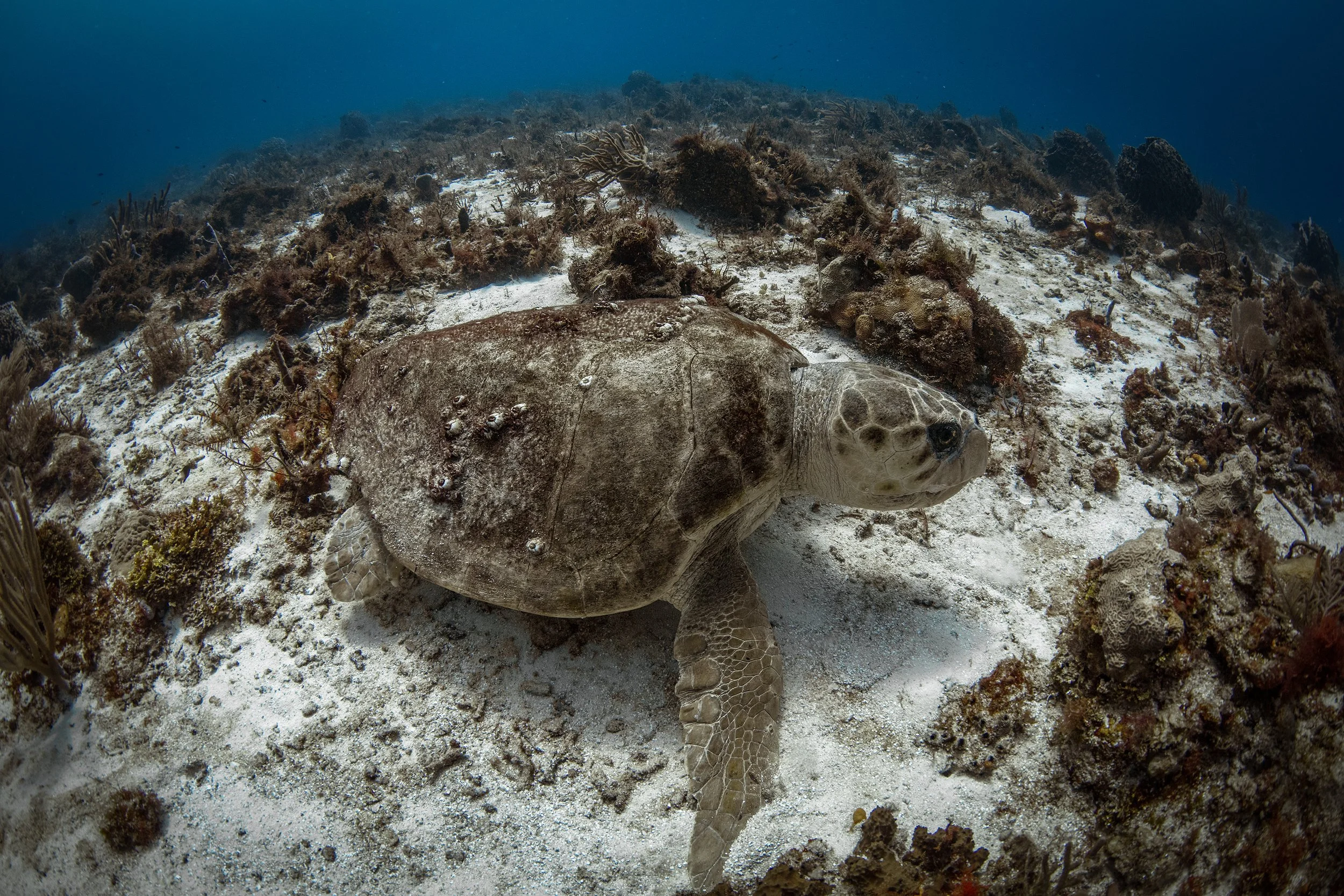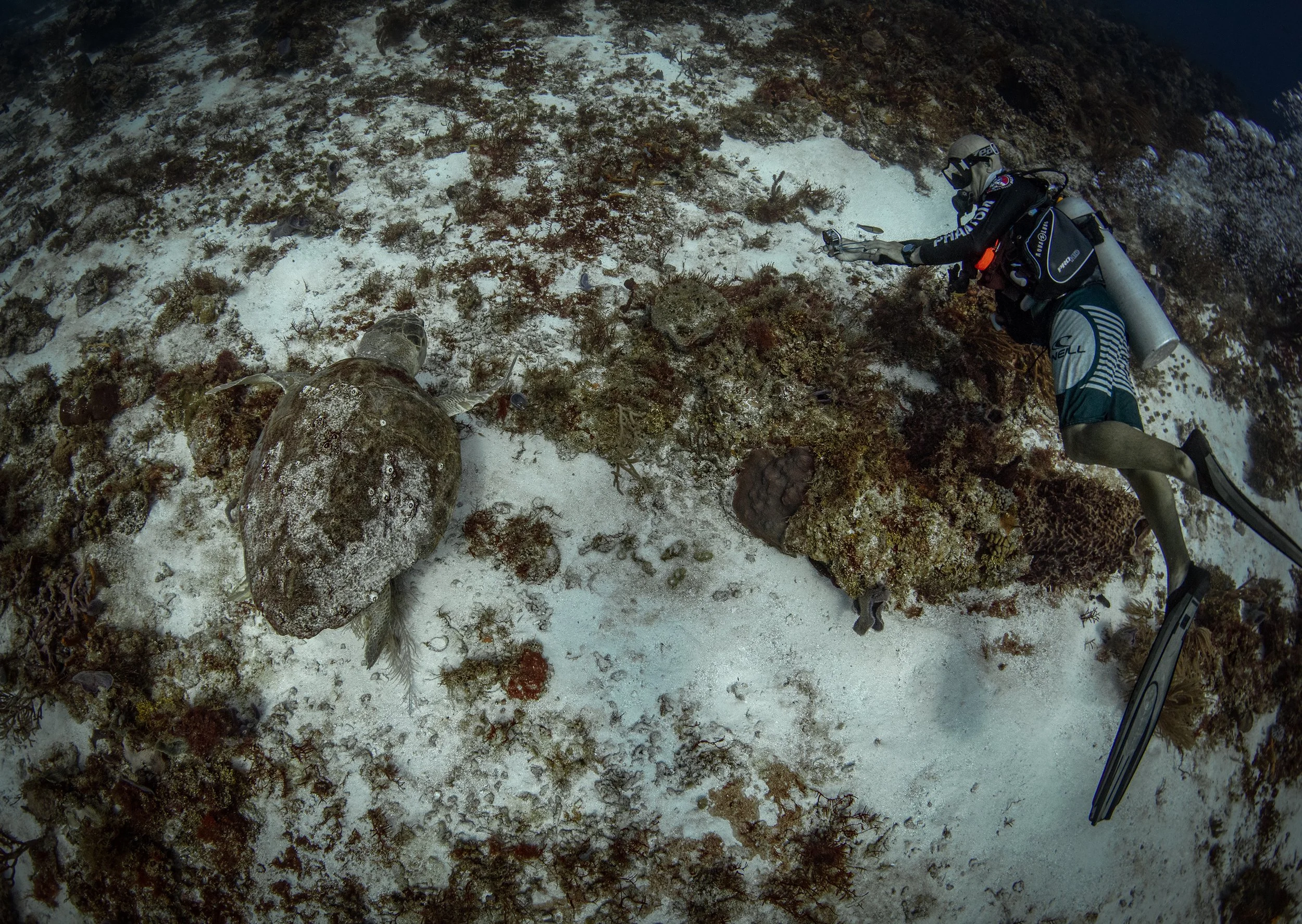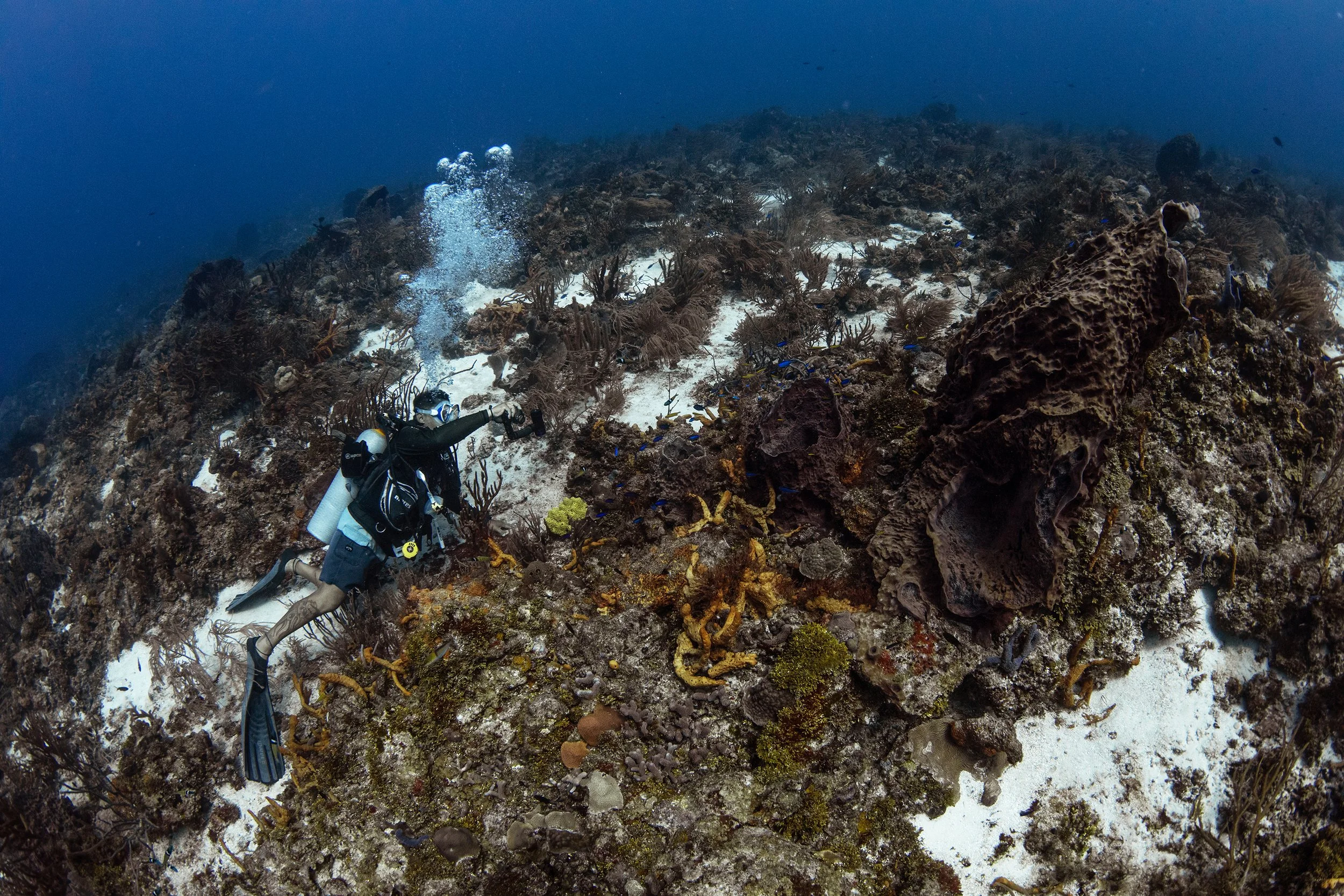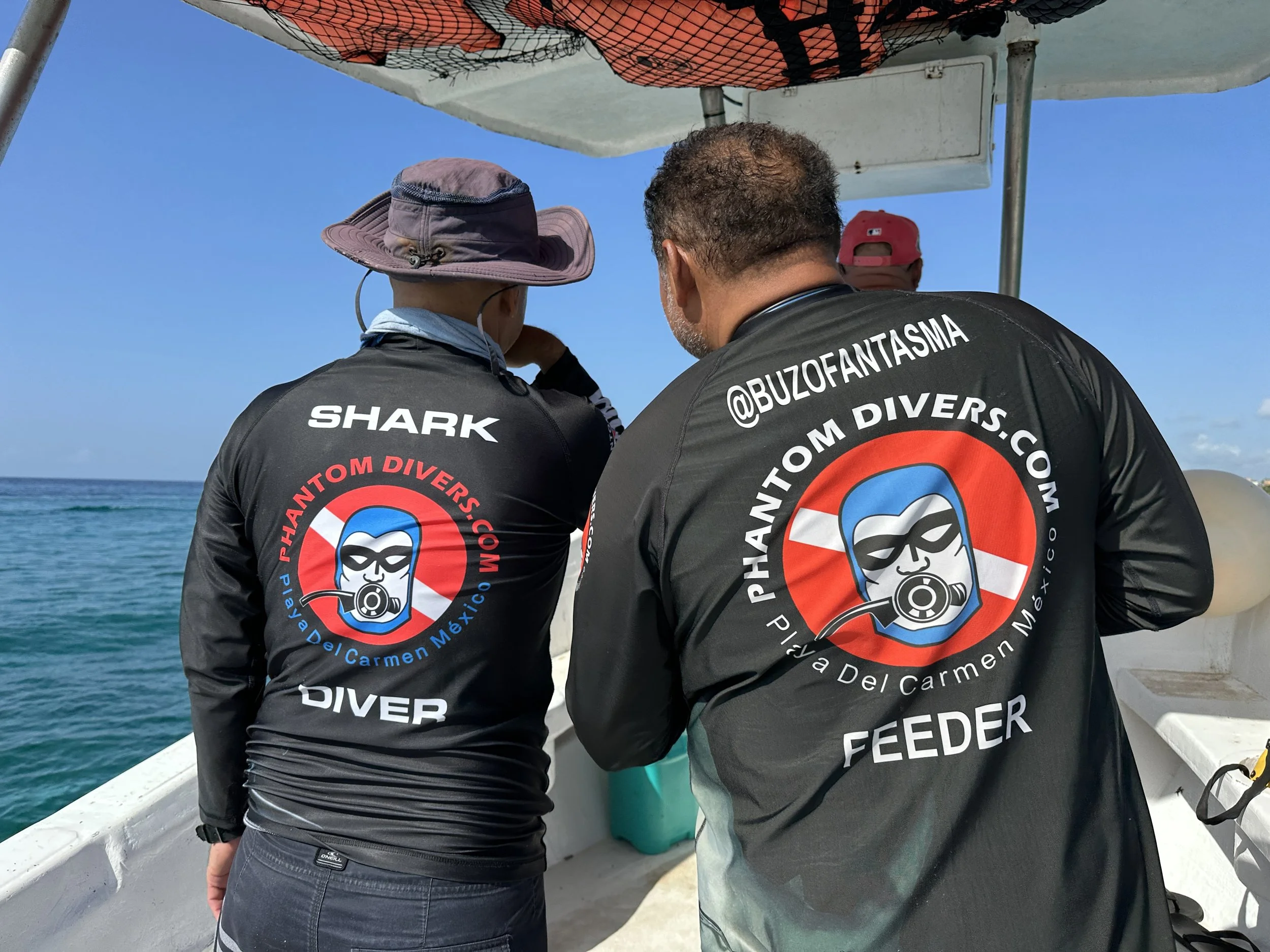Ramon and my girls, Mari and Sophia. Let’s go diving!!!
July 5, 2025. Day One, Dive One
We kicked off the trip down South with Phantom Divers for a couple of reef dives, and the conditions couldn’t have been better… calm seas, bright sun, and that perfect Caribbean glow.
It is always fun diving with Phantoms, here in Playa Del Carmen, Mexico.
We try to stop in and hang out with them every time we visit this part of Mexico.
I met them back in 2009, during the Shark Diver Magazine days, and they have become part of my extended family.
Especially my bro Ramon… A fellow shark feeder and genuine badass.
Our first dive was at Punta Venado, where we encountered three turtles, two hawksbills and one massive loggerhead.
Loggerhead seaturtle
No photos of the hawksbills this time, but I did manage to get a few shots of the loggerhead.
She was a big, beautiful female, so large that she made Polo, one of our friends from Phantom Divers, look small in comparison.
Polo and Loggerhead
It was a fun dive, especially watching Ramon swim around with his camera, capturing everything.
It’s always cool to see that after all these years, he’s still lit up by the marine life right in his backyard.
Ramon shooting the reef.
The dive ended with a school of jacks swirling above us, then dropping down to the reef right in front of us, a nice, big school of fish that made for a strong close to the dive.
Dive Two – Barracuda Reef
Next, we drifted over Barracuda Reef, a beautiful stretch with overhangs and pockets of sea grass.
We were hoping for green sea turtles, and we found two grazing in the grass.
Atlantic green seaturtles
They didn’t stick around long, greens tend to be more cautious than the other species.
Polo and Ramon share a moment…
Later, we spotted a big male loggerhead and a male green turtle, but both were just out of reach for a real encounter.
Still, three turtle species on our first day of diving is pretty damn cool.
Also spotted a small school of squid, curious little creatures.
They darted off at first, then came back around for another look at us.
It’s those little moments that often stick with you.
It was a solid day, with old friends, good conditions, and turtles leading the way.
Tomorrow we dive again.
Let’s see what shows up.
Thank you for reading our Blog.
*New Blogs posted 3–4 times a week. (sometimes more.)
Follow along for fresh stories, trip updates, and raw moments from the wild.

